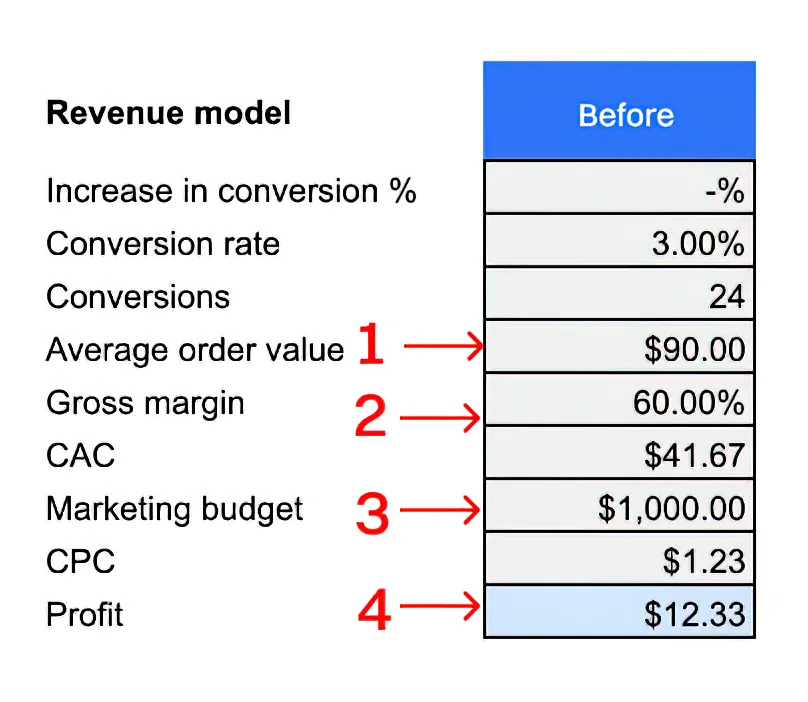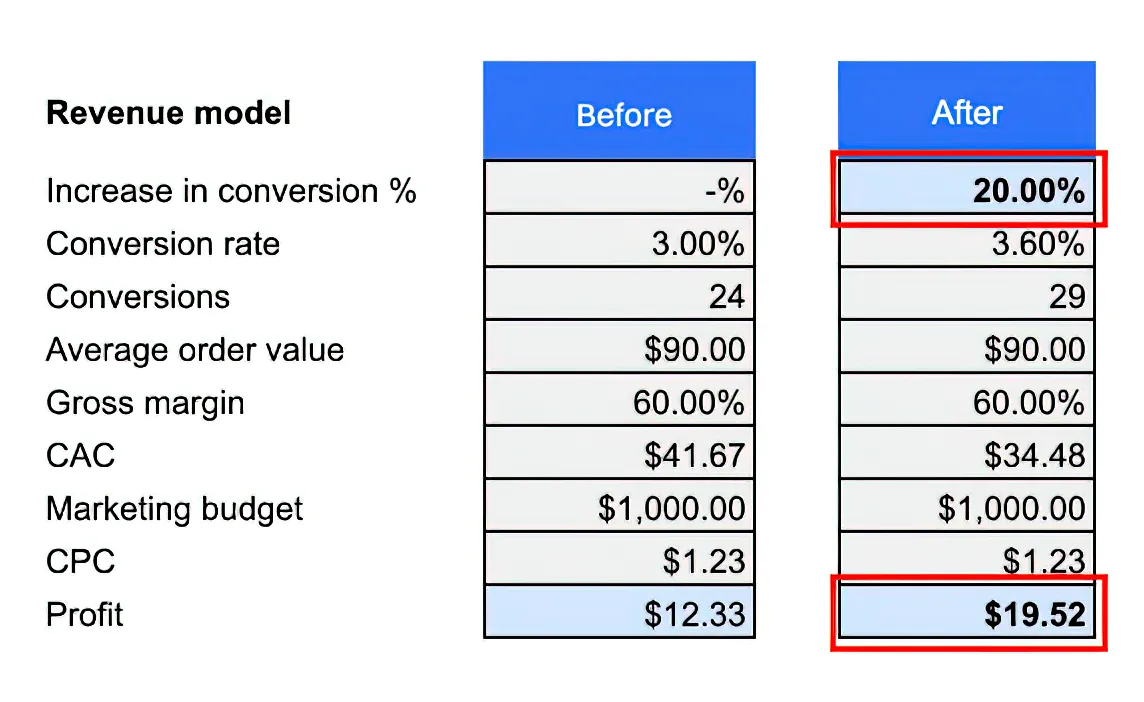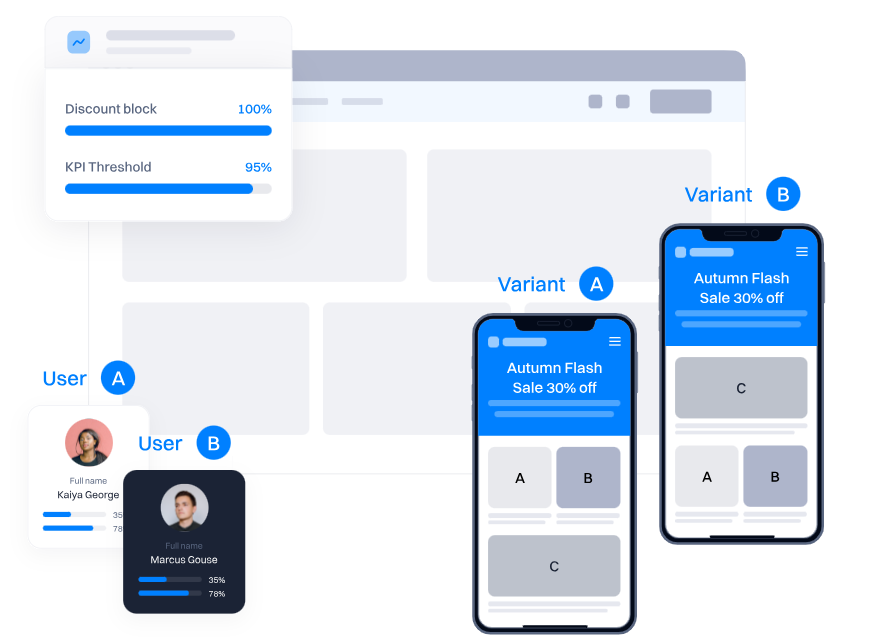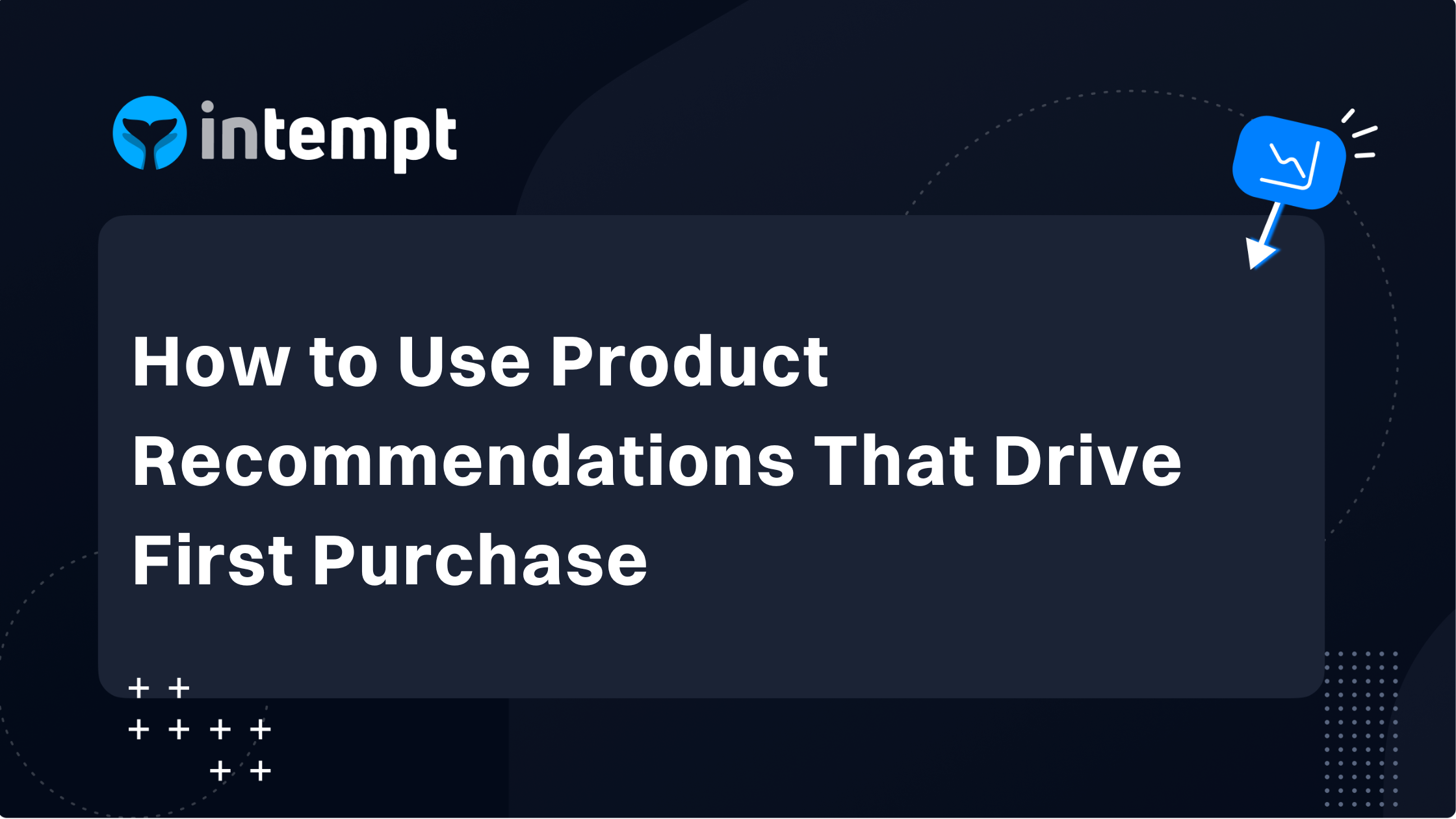Post-Holiday Sales Challenge: Turning One-Time Buyers into Repeat Customers
This case study explains how a multi-category online store uses an AI-driven solution to lower customer acquisition costs, boost conversion rates, and increase customer lifetime value after the busy fall holiday season. Even when organic traffic and sales drop by as much as 60-70%, the right strategies can keep your store growing.
.png)
The Challenge: Post-Holiday Drop-Off
After the holiday rush, most e-commerce stores experience a sharp slowdown. Organic traffic and sales can decline by 60 - 70%, making it challenging to sustain growth without incurring significant losses.
Our multi-category online store faced the same challenge - high acquisition costs, lower conversion rates, and the need to turn one-time shoppers into repeat customers. The goal was clear: acquire new users profitably and retain them longer.
The Revenue Reality
Let’s break down the numbers for the store:
- Average Order Value (AOV): The average purchase is $90.
- Gross Margin: The store keeps 60% of each sale. This means that after a cost of $36, there’s $54 left from each order.
- Marketing Budget: The store has a $1,000 marketing budget.
- Cost Per Click: On average, each click costs $1.23.
- Customer Acquisition Cost (CAC): It costs about $41.67 to acquire a new customer.
- Profit Runway per New Customer: After covering the acquisition cost, the store has about $12.33 left as profit or promotion budget for the first sale.

What the Store Did Differently?
Smarter Cross & Up-Selling
Instead of random “frequently bought together” bundles, the team used AI to segment behavior-based recommendations, matching products based on browsing and cart patterns. This lifted their AOV by 12% within weeks.
Takeaway: Personalize offers using data signals, not assumptions.

Retargeting Ads:
- With the help of AI, it showed ads to visitors who didn’t convert in the first time.
- However, with a standard conversion rate of about 3%, you may need around 30 clicks (roughly $30) to make one conversion. This number is higher than the $12.33 profit margin available, so careful management of ad spend is critical.
Takeaway: Precision beats volume. Retarget where purchase intent is highest.

Increasing Conversion Rates:
Discounts: Offering discounts can boost conversions, but it might also lower margins.
Personalization & Experimentation:
- Tailor the user experience through targeted messaging and A/B testing.
- For example, a 20% improvement in the conversion rate can increase profit per new customer from $12.33 to $19.52.
- This extra profit can be reinvested in advertising or promotions, while still maintaining overall profitability.
Takeaway: Test messaging before cutting prices.
Retention & Monetization
Acquiring a customer is just the beginning. To ensure long-term success, the store must focus on retaining customers and increasing their lifetime value (LTV).
LTV/CAC Ratio:
- After the first purchase, the LTV is $90 compared to a CAC of $41.67, which gives a ratio of about 1:2.
- To achieve a CAC: LTV ratio of 1:3 or better, encouraging a repeat purchase is essential.
Post-Purchase Strategies:
- Upselling: Offer complementary products or upgrades after the initial sale.
Personalized Offers: Engage customers with targeted offers that keep them connected to your brand and encourage repeat business.

Enter Intempt GrowthOS: The AI-Driven Solution
Intempt GrowthOS unified customer data, predicted buying intent, and automated personalization with its AI-powered tools. Instead of managing separate tools, the brand managed its full lifecycle in a single unified system.
How Intempt GrowthOS Helped?
Data Integrations & Identity Resolution
Unified customer data from multiple sources to build complete profiles and deliver consistent experiences.

Timely Marketing Experiences
Automated behavior-triggered campaigns, delivering the right message at the exact moment users were most likely to engage.

Growth Methodology For Profit Scaling
Discover Audiences 🔮
Unify and analyze customer data from all channels and use machine learning to predict who is most likely to purchase.
Discover: Identify, Build, and Analyze: Gather customer data from all your sources, combine it to form a complete picture, and use it to pinpoint your target leads and accounts.

Predict: Use machine learning to understand and forecast what your customers are likely to do next with real-time insights.
Engage Customers 💬
Personalize every interaction with automated triggers like emails or SMS based on real-time behavior.
Personalization: Tailor every communication across web, mobile, and email to suit individual customer needs and preferences.

Journeys: Based on real-time behavior, send timely emails or SMS when customers hit a new stage or show a drop in activity.
Optimize Experiences 💹
Experiment with different strategies and use insights to continually improve customer engagement.
Experiment: Test different strategies on your website or app with confidence and minimal risk to find what works best.

Analyze: Review the results of your experiments to gain clear, actionable insights that drive continuous improvement.
Results You Can Aim For
Stores adopting this data-driven, AI-assisted approach typically achieve:
- 20 - 30% lower CAC through precise targeting.
- 15 - 25% lift in repeat purchase rate.
- Higher LTV: CAC ratios (up to 3:1) within one quarter.
TL;DR
- Sales drop by 60–70% after the holiday season.
- The store needed to lower CAC and improve repeat purchases.
- Used data-driven upsells, retargeting, and A/B testing to boost conversions.
- Focused on retention through personalized post-purchase offers.
- Intempt GrowthOS helped unify data, predict intent, and automate marketing.
- Result: Lower costs, more repeat customers, and steady growth.
- Key learning: With Intempt GrowthOS, even slow months can be profitable.
FAQs
Q1: How can eCommerce brands retain customers after the holidays?
Use personalized post-purchase offers and timely reactivation campaigns.
Q2: How can AI improve customer retention?
AI predicts churn, personalizes experiences, and automates engagement at scale.
Q3: Should I increase discounts during slow months?
Only if paired with smart targeting, broad discounts hurt the margins.
Q4: How can I unify customer data from multiple sources?
You can use Intempt’s Identity Resolution feature that connects data from web, app, and CRM channels to create a single customer profile, ensuring accurate personalization and reporting.
Q5: What role does AI play in improving customer retention?
AI analyzes user behavior and predicts churn or repeat purchase intent. Intempt’s predictive models automate re-engagement with personalized offers at just the right moment.
Q6: What’s the first metric to track for retention success?
Repeat purchase rate (RPR) within 30 - 60 days of first order.


Check out Growth Play Library ➡️
Get started free on GrowthOS ➡️
Book a growth call ➡️
.svg)
Sid Chaudhary
Founder & CEO
Looking for ways to grow faster?
Discover marketing workspace where you turn audiences into revenue.
Learn about IntemptYou might also like...

7 Best Klaviyo Alternatives in 2025: Features, Pricing, and Comparisons
Klaviyo is a proven email and SMS marketing platform - especially for ecommerce brands that live and breathe segmentation, product feeds, and multi-step flows. But many teams tell us they can’t justify the cost, don’t need the full power, or struggle with the learning curve. If you’re wondering whether there are competitors with similar capabilities for less money or tools that feel faster and simpler to run day-to-day, the short answer is yes.


How to Use Product Recommendations That Drive First Purchase
Most first-time visitors are actively comparing, not committing. They bounce between PDPs, size/fit charts, shipping/returns, and discount pages, and leave without giving you an email or cookie you can rely on. Treating your product recommendations as an “afterthought carousel” means you miss the exact micro-moments when guided discovery would tip them into the cart.

.png)
How Slack Nails User Onboarding (and How You Can, Too)
Have you ever been through Slack onboarding? If you’ve then you just know that they have it spot on. Slack shortens time-to-value by designing the first 10 minutes around one outcome. In this case study, we break down the moments that matter in Slack’s onboarding and show exactly how to implement the same playbook in your PLG SaaS.

Subscribe to The Full Stack Marketer 📈
Zero theory or mindset discussions here; just actionable marketing tactics that will grow revenue today.





.svg)







.png)















.svg)

.svg)





